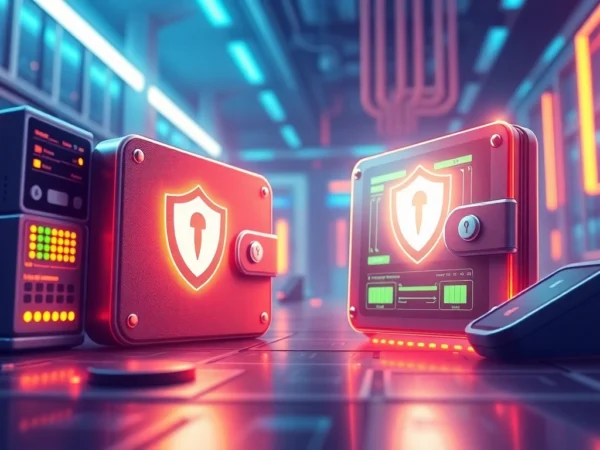Essential Guide to Choosing the Best Crypto Wallet for Secure Digital Asset Management
Understanding the Basics of a Crypto Wallet
What Is a Crypto Wallet and How Does It Work?
In the rapidly evolving landscape of digital assets, a crypto wallet serves as a fundamental tool that enables users to store, manage, and transfer cryptocurrencies securely. Unlike traditional wallets that hold physical cash, crypto wallets are digital or physical devices that store the private and public keys essential for conducting blockchain transactions. These keys act as the digital equivalent of bank account numbers and PINs, ensuring that only authorized users can access and transfer their assets. A crypto wallet works by securely encrypting these keys, protecting them from theft or unauthorized access, and facilitating interaction with various blockchain networks for sending and receiving funds.
There are generally two core components within a crypto wallet: the private key, which grants complete control over the assets and must be kept secret, and the public key, which functions like an address that can be shared openly to receive funds. When a transaction occurs, the wallet signs it using the private key, verifying the user’s identity and initiating the transfer. Because private keys are the ultimate control point, safeguarding them through robust security measures is paramount.
Types of Crypto Wallets: Hot vs Cold Storage
Crypto wallets are broadly categorized into hot wallets and cold wallets, each with its own advantages and security considerations. Understanding these types is critical for optimizing both access and safety.
Hot Wallets
Hot wallets are connected to the internet, making them highly accessible for day-to-day transactions. Examples include web-based wallets, mobile wallets, and some desktop wallets. Their convenience, however, comes with increased vulnerability to cyber-attacks, phishing, and malware. Popular hot wallets like MetaMask and Trust Wallet offer user-friendly interfaces and quick transaction capabilities but should be used with caution for storing large amounts of crypto.
Cold Wallets
Cold wallets are offline storage solutions that significantly reduce exposure to hacking threats. These include hardware wallets like Ledger Nano S/X and Trezor, as well as paper wallets. They are ideal for long-term storage and large holdings, as private keys stored offline cannot be accessed remotely. Despite their security benefits, cold wallets are less convenient for frequent transactions and require physical access and proper safekeeping.
Key Features to Look for in a Reliable Crypto Wallet
Selecting a trustworthy crypto wallet requires careful consideration of several features. An ideal wallet should have:
- Robust Security: Features like multi-factor authentication, biometric access, and seed phrase backups to prevent unauthorized access.
- User Control: Full ownership of private keys, preferably via non-custodial wallets where the user maintains complete custody.
- Cross-Platform Compatibility: Support for multiple devices and operating systems, including mobile and desktop versions.
- Multi-Asset Support: Ability to store, send, and receive various cryptocurrencies and tokens across different blockchain networks.
- Backup and Recovery Options: Secure methods for restoring access in case of device loss or failure.
- Integration with Web3 and dApps: Seamless connection with decentralized applications, decentralized exchanges, and NFT platforms.
Leading examples such as MetaMask and Exodus exemplify these features, providing users with secure, versatile, and user-friendly experiences. It is crucial to verify wallet credentials, reviews, and security track records before committing.
How to Select the Right Crypto Wallet for Your Needs
Security Measures and Privacy Features
Security is the cornerstone of any effective crypto wallet. First, ensure that the wallet employs advanced encryption protocols and offers multi-signature capabilities to prevent unauthorized transactions. Non-custodial wallets where users retain private keys eliminate third-party risks but demand rigorous personal security practices. Additionally, look for wallets that support hardware wallet integration, enabling multi-factor security for high-value holdings.
Privacy features such as minimal data collection, transaction anonymity, and optional account creation can further enhance security. Regularly updating wallet software to patch vulnerabilities and avoiding sharing seed phrases or private keys are essential best practices.
Compatibility with Different Blockchains and Assets
The evolving crypto ecosystem encompasses diverse blockchain platforms—Ethereum, Binance Smart Chain, Solana, and others. A compatible wallet should support multiple assets, tokens, and standards (such as ERC-20, BEP-20, SPL). Multi-chain wallets allow users to manage assets across networks without switching devices or interfaces, thereby streamlining portfolio management. When choosing a wallet, confirm that it supports the specific tokens and blockchains in your investment strategy.
Ease of Use and User Interface Considerations
User experience plays a significant role, especially for newcomers. An intuitive interface with clear navigation, straightforward transaction processes, and comprehensive customer support can reduce errors and increase confidence. Demonstrable transaction histories, real-time notifications, and easy backup procedures also contribute to a seamless experience.
Advanced features should be accessible but not overwhelming, ensuring users of all levels can confidently manage their digital assets.
Best Practices for Managing Your Crypto Wallet
Safeguarding Private Keys and Recovery Phrases
The private key or seed phrase is the most critical component of your crypto wallet’s security. Always generate and store your seed phrase in a secure, offline location—preferably in a physical form such as a laser-etched metal backup stored in a safe. Avoid digital storage methods like email or cloud drives that are susceptible to hacking. Never share your seed phrase or private key with anyone, and beware of phishing attempts that aim to trick you into revealing sensitive information.
Some wallets offer the option of multi-signature setups or hardware wallet integration, adding additional layers of security and ensuring that even if one device is compromised, assets remain protected.
Regular Updates and Security Audits
Keeping your wallet software up-to-date ensures you have the latest security patches and features. Many reputable wallets regularly release updates to mitigate emerging vulnerabilities. Engaging in periodic security audits of your wallet setup—or utilizing hardware wallets known for their secure firmware—provides peace of mind. For enterprise-grade security, consider employing third-party security audits and multi-layered authentication approaches.
Integrating Your Wallet with Other Web3 Tools
A critical aspect of modern crypto management involves seamless integration with decentralized applications (dApps), decentralized exchanges (DEXs), NFT platforms, and staking services. Wallets like MetaMask facilitate connectivity with dozens of Web3 tools, enabling users to participate in DeFi, yield farming, and non-fungible token (NFT) markets effortlessly. Ensure your chosen wallet supports standard protocols like WalletConnect or browser extensions that facilitate interoperability across the expanding ecosystem.
Future Trends in Crypto Wallet Technology
Decentralized Wallets and Increasing User Control
The future points toward a shift from centralized custody solutions to fully decentralized wallets that empower users with complete control over their private keys. Decentralized wallets maximize privacy, reduce third-party vulnerabilities, and support sovereignty over digital assets. Projects like Argent and hardware solutions are pushing boundaries to make decentralization more accessible and secure for all users.
Role of Multi-Chain and Cross-Platform Compatibility
As interoperability standards improve, wallets capable of managing multiple blockchains within a single interface will become the norm. Cross-platform compatibility—supporting desktop, mobile, and hardware integrations—enhances flexibility and user convenience. This trend fosters unified asset management, reduces fragmentation, and supports broader adoption.
Innovations in Security and User Experience
Advanced security mechanisms such as biometric authentication, social recovery, and AI-powered threat detection are set to redefine wallet security. Additionally, user experience will improve with features like social logins, intuitive onboarding, and real-time risk alerts. These innovations will lower entry barriers and ensure a safer, more user-friendly environment for both novices and experts.
Case Studies and Real-World Applications
Successful Wallet Implementations in Business
Major organizations are integrating crypto wallets for transaction management, employee compensation in cryptocurrencies, and corporate treasury solutions. For example, companies like Everything Blockchain Inc. are adopting frameworks like XRPFi for optimizing treasury yields—demonstrating how enterprise-grade wallet solutions can generate tangible financial benefits while maintaining security and compliance.
Lessons from Security Breaches and How to Avoid Them
Recent incidents such as NPM attacks exploiting AI prompts to steal wallet keys highlight the importance of layered security. Best practices include hardware wallet usage, avoiding suspicious links, and regularly auditing security protocols. Learning from breaches, organizations and individuals can implement multi-layered safeguards, monitor threat intelligence, and educate users about emerging risks.
Emerging Market Opportunities with Crypto Wallets
Developing countries are leveraging crypto wallets for financial inclusion, enabling unbanked populations to access financial services. Innovative solutions like crypto-native neobanks, such as those emerging from Europe, are exemplifying how easy-to-use wallets can support cross-border remittances, microtransactions, and access to decentralized finance (DeFi). As regulatory frameworks evolve, opportunities will expand to incorporate compliance-focused wallets tailored for institutional adoption.










